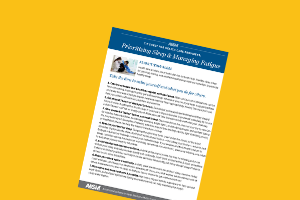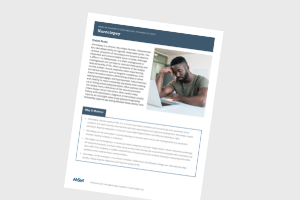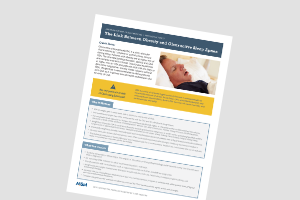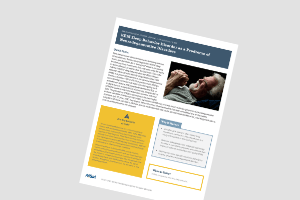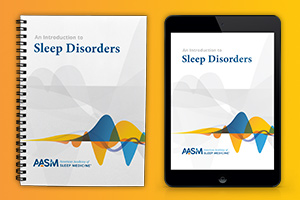Provider Fact Sheets
It is important for all medical providers to be aware of the signs and symptoms of common sleep disorders. These Provider Fact Sheets were developed by sleep medicine professionals to equip primary care providers and colleagues in other specialties with key information regarding some of the most common sleep disorders: obstructive sleep apnea (OSA), insomnia, narcolepsy and restless legs syndrome (RLS). Each sleep medicine fact sheet includes the following sections: Quick Facts, Why It Matters, What You Can Do, Referring Guidelines, and Patient Information Websites.
Prioritizing Sleep & Managing Fatigue
Healthy sleep is key for physical, mental, and emotional well-being. However, health care workers are at particular risk for poor sleep. Sleep loss, circadian misalignment, stress, and work overload all can contribute to insufficient sleep and fatigue. Therefore, it is important for all health care workers to prioritize sleep to sustain alertness and performance while at work. This fact sheet provides tips for health care providers to promote healthy sleep and mitigate on-the-job fatigue.
Shift Work
Timing of shifts and shift schedule changes may significantly affect sleep in a subset of your patients. Learn what you can do to help your patient navigate their shift schedule changes and improve both the quantity and quality of their sleep. View Shift Work Provider Fact Sheet.
Narcolepsy
Do you have patients whose chief complaint is excessive daytime sleepiness that leads to an irrepressible need to sleep? Consider narcolepsy as part of your differential diagnosis. This fact sheet provides information on a condition that affects 1 in 2000 people. View Narcolepsy Provider Fact Sheet.
Insomnia
Your patient complains, “I just can’t sleep!” This fact sheet includes information on insomnia and the factors that contribute to it. Learn why treatment is important and what you can do to help patients. View Insomnia Provider Fact Sheet.
Brief Behavioral Treatment for Insomnia (BBTI)
BBTI is a psychological treatment modality, derived from CBT-I, which is delivered over four consecutive weeks (total of four sessions), and focuses on altering behaviors in order to improve sleep. In comparison to CBT-I, this treatment is shorter in duration, can be delivered by a range of clinicians who are familiar with health promotion and health coaching, and thus can potentially reach many more patients. View Brief Behavioral Treatment for Insomnia (BBTI) Provider Fact Sheet.
Obesity and OSA
What is the link between obesity and obstructive sleep apnea (OSA)? Learn how to initiate those tough discussions around weight as well as educate your patients about the health risks of OSA. View Obesity and OSA Provider Fact Sheet.
Restless Legs Syndrome
This fact sheet will help you determine if your patients might be at risk for restless legs syndrome (RLS). Discover the latest in treatment options and when to refer RLS patients to a sleep medicine specialist. View Restless Legs Syndrome Provider Fact Sheet.
REM Sleep Behavior Disorder (RBD)
What are the distinct features you should look for in patients with REM sleep behavior disorder (RBD)? Discover the connection between RBD and neurodegenerative diseases such as Parkinson disease, Lewy body dementia and multiple system atrophy. View REM Sleep Behavior Disorder Provider Fact Sheet.
Additional Learning
Improve your knowledge and skills in the field of sleep even further with An Introduction to Sleep Disorders. The textbook, available in both print and as an eBook, provides a broad overview of the complete range of sleep disorders seen in clinical practice. A list of important reference articles is included at the end of the textbook for those interested in reading more about a particular topic. Learn more and buy it today!





